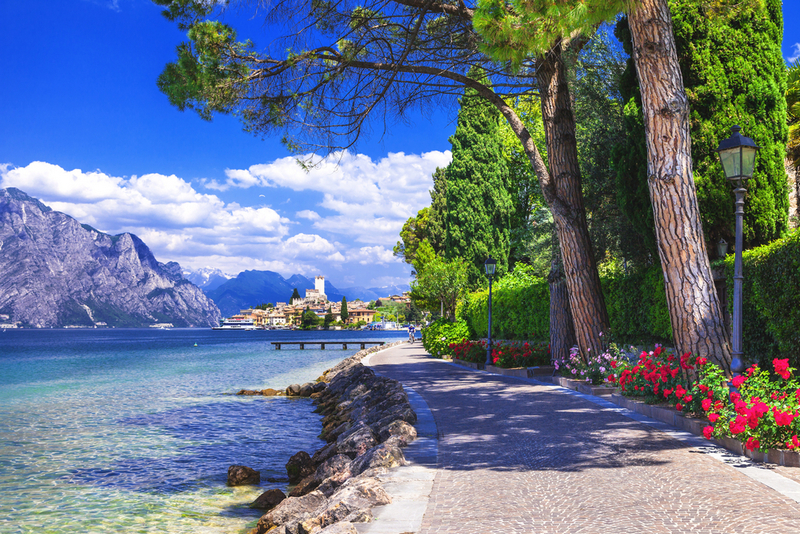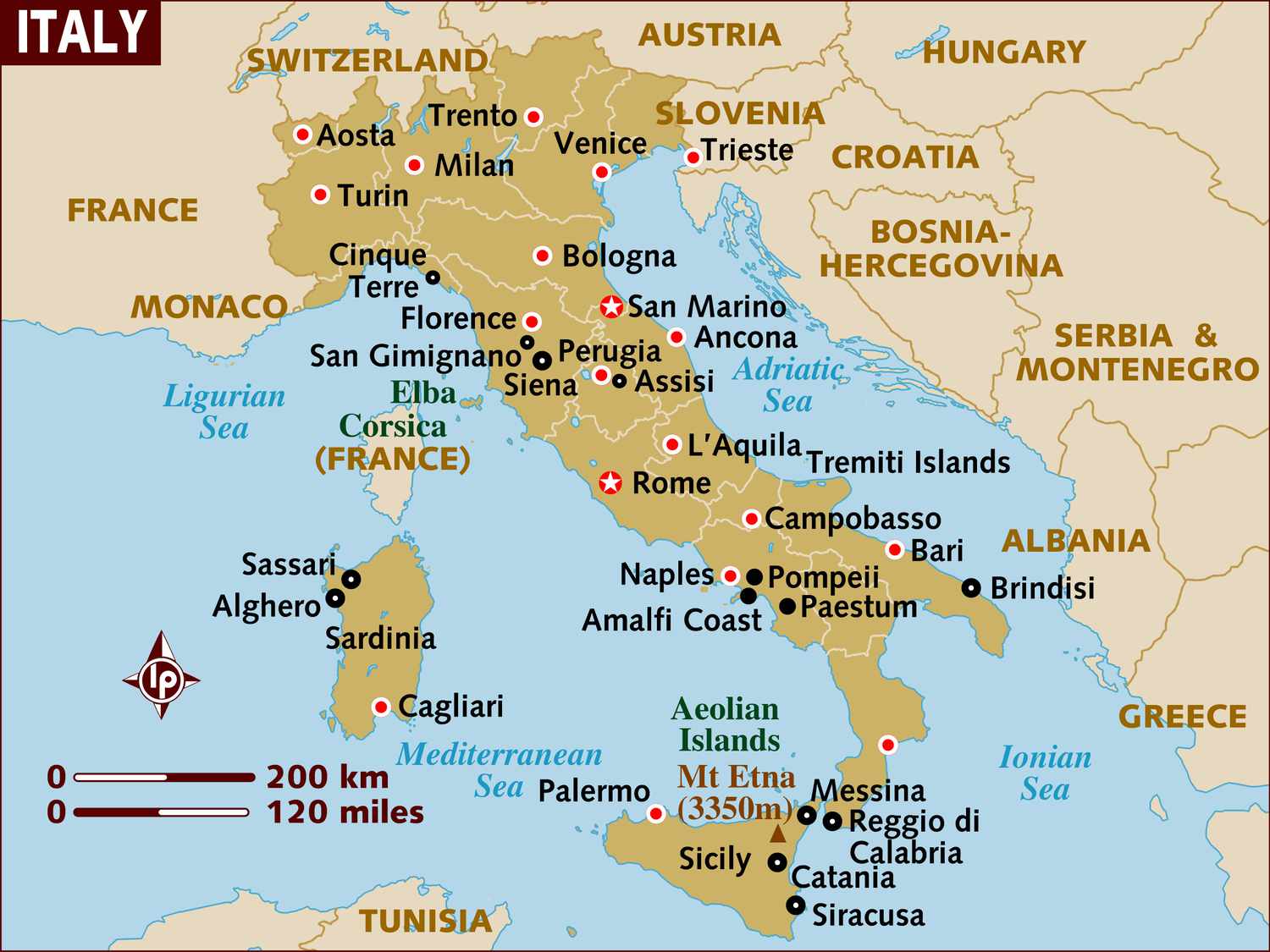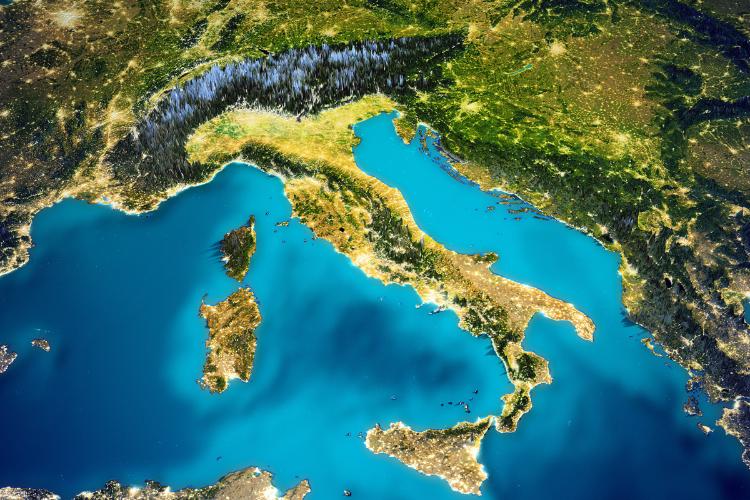Italy’s geography is crucial in shaping its climate, culture, and lifestyle. From the snowy peaks of the Alps to the sun-kissed shores of Sicily, Italy’s landscapes are as varied as they are beautiful, making it a captivating destination for travelers.
The country’s northern region is dominated by the majestic Alps, offering breathtaking mountain vistas and world-class skiing resorts. Moving southward, Italy’s landscape transitions into rolling hills and fertile plains, known as the Po Valley, providing ideal conditions for agriculture.
Central Italy is characterized by its iconic cities, such as Rome and Florence, nestled amidst picturesque landscapes. The Apennine Mountains traverse the peninsula, offering stunning vistas and outdoor recreational opportunities. The southern region, including the islands of Sicily and Sardinia, features rugged coastlines, pristine beaches, and volcanic terrain, adding to Italy’s natural diversity.
Rivers and Lakes in Italy
Italy’s rivers are some of the country’s most iconic tourist destinations. Among these, the Po River stands out, commencing its journey amidst the majestic Alps. From its origins, it courses eastward, meandering through the city of Turin before reaching the eastern coast and eventually merging with the Adriatic Sea. En route, it traverses the incredibly fertile Po Valley, a sight to behold for visitors. Finally, the Po River culminates its grand journey at the Po Delta, an intriguing locale worthy of exploration.
In the heart of Italy, the Arno River is a picturesque route from the north-central Apennines. Passing through the historic cities of Pisa and Florence, where the renowned Ponte Vecchio graces its waters, the Arno gracefully empties into the Tyrrhenian Sea along the western coast. Meanwhile, the Tiber River originates in the Apennines and wends its way southward, carving a path through the illustrious city of Rome before joining the Tyrrhenian Sea.
Italy boasts an abundance of lakes, particularly in its northern expanse. Among them, Lake Garda reigns as the largest Italian lake, encompassing a circumference of approximately 158 kilometers, or roughly 100 miles. Its serene waters and scenic surroundings offer an idyllic retreat for travelers seeking natural splendor.
Mountain Ranges and Volcanoes in Italy
Italy boasts approximately 40% of its terrain as mountainous, offering splendid destinations for skiing in the winter and hiking in the summer. Dominating these landscapes are two prominent mountain ranges: the Alps and the Appennino, also known as the Apennines.

The Alps, situated in the northern regions, are segmented into three distinct sections: the Occidentali, the Centrali, and the Orientali, stretching along the borders with France, Austria, and Switzerland respectively. Meanwhile, forming the spine of Italy is the north-south aligned Appennino chain. Notably, the Dolomites, often associated with the Alps, are nestled within South Tyrol, Trentino, and Belluno.
Towering as Italy’s highest peak is Monte Bianco, known as Mont Blanc, reaching an impressive 15,781 feet along the French border within the Alps. Venturing southwards, Mount Vesuvius emerges as the sole active volcano in mainland Europe, situated near Naples in southern Italy. This iconic volcano famously entombed the ancient city of Pompeii, now a renowned archaeological site drawing countless tourists.
Across the waters, on the island of Sicily, Mount Etna proudly stands as one of the globe’s largest active volcanoes. Its fiery temperament adds to the allure of Sicily’s landscape, captivating visitors with its awe-inspiring displays of nature’s might.
The Geography of Italy for Kids
Italy, often recognized for its distinctive boot-like shape on the map, boasts a rich tapestry of culture, cuisine, and history that captivates visitors worldwide. Jutting out into the Adriatic and Mediterranean seas, Italy is a European nation steeped in tradition and modernity. Its official language is Italian, and as a member of the European Union, it operates with the euro as its currency. The vibrant capital city, Rome, serves as a hub of historical significance, adorned with iconic landmarks and ancient monuments.
Italy boasts a rich tapestry of cities, each offering its unique charm and history. Among these are Milan, Turin, Florence, Genoa, Naples, Palermo, and Venice. Additionally, Italy is home to several captivating islands, with Sicily and Sardinia standing as the largest, accessible by both ship and aircraft.

Italy’s Geography and History
Italy, although only officially united in 1861, boasts one of Europe’s most ancient cultures. Its rich history of greatness, artistic brilliance, and diverse natural landscapes has long been a magnet for travelers worldwide. Tourists flock to Italy in pursuit of its stunning art, picturesque scenery, and significant religious sites.
At its heart lies Rome, one of the world’s oldest and most vibrant cities, serving as both the capital and the largest urban center of Italy. Nestled within Rome is Vatican City, an independent state and the spiritual center of the Roman Catholic Church. Italy spans an area of 116,629 square miles (302,068 square kilometers) with an estimated population of 58,983,000 as of 2023.
Italy stood as the epicenter of the formidable Roman Empire, stretching from the northern reaches of Scotland to the distant lands of modern-day Iraq, and from the Rhine River in the north to the Sahara Desert in North Africa. Following the empire’s decline, Italy fragmented into numerous states, yet it retained its prominence in commerce, both over land and sea, as well as in the arts. Italy played a pivotal role in the development of modern finance, pioneering banking practices and facilitating foreign trade, while also spearheading the Renaissance, a revival of classical European art and philosophy.
The unified Italy that emerged in 1861 faced economic challenges due to its limited natural resources. Despite gaining territory in World War I, Italy grappled with ongoing economic woes. The ascent of Fascist dictator Benito Mussolini further complicated Italy’s trajectory. Subsequently, during World War II, Italy endured occupation by Germany and invasion by Allied forces, resulting in widespread destruction and economic collapse. With assistance from abroad, Italy embarked on a path of recovery, rebuilding its cities, revitalizing its economy, and fortifying its democratic institutions.
